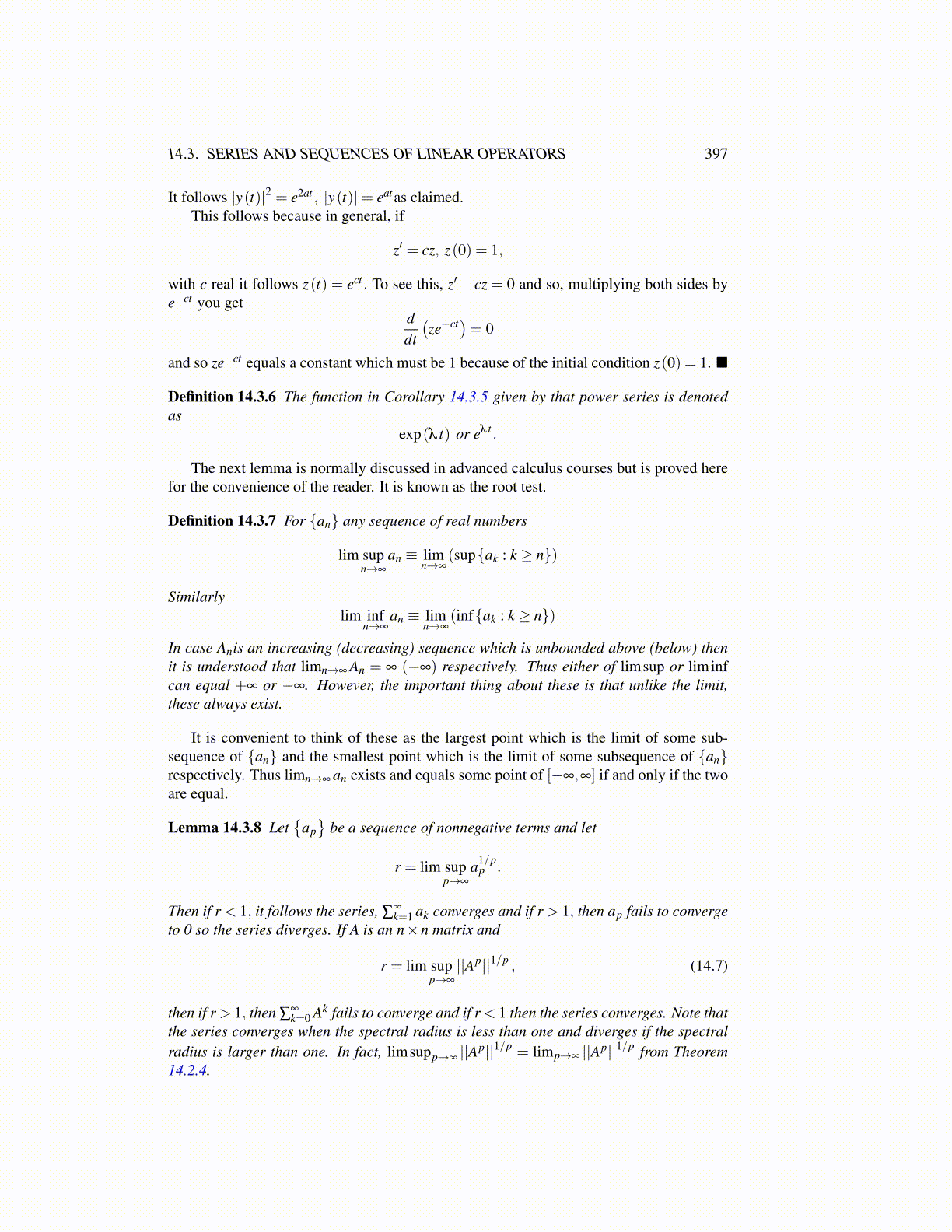
14.3. SERIES AND SEQUENCES OF LINEAR OPERATORS 397
It follows |y(t)|2 = e2at , |y(t)|= eatas claimed.This follows because in general, if
z′ = cz, z(0) = 1,
with c real it follows z(t) = ect . To see this, z′− cz = 0 and so, multiplying both sides bye−ct you get
ddt
(ze−ct)= 0
and so ze−ct equals a constant which must be 1 because of the initial condition z(0) = 1. ■
Definition 14.3.6 The function in Corollary 14.3.5 given by that power series is denotedas
exp(λ t) or eλ t .
The next lemma is normally discussed in advanced calculus courses but is proved herefor the convenience of the reader. It is known as the root test.
Definition 14.3.7 For {an} any sequence of real numbers
lim supn→∞
an ≡ limn→∞
(sup{ak : k ≥ n})
Similarlylim inf
n→∞an ≡ lim
n→∞(inf{ak : k ≥ n})
In case Anis an increasing (decreasing) sequence which is unbounded above (below) thenit is understood that limn→∞ An = ∞ (−∞) respectively. Thus either of limsup or liminfcan equal +∞ or −∞. However, the important thing about these is that unlike the limit,these always exist.
It is convenient to think of these as the largest point which is the limit of some sub-sequence of {an} and the smallest point which is the limit of some subsequence of {an}respectively. Thus limn→∞ an exists and equals some point of [−∞,∞] if and only if the twoare equal.
Lemma 14.3.8 Let{
ap}
be a sequence of nonnegative terms and let
r = lim supp→∞
a1/pp .
Then if r < 1, it follows the series, ∑∞k=1 ak converges and if r > 1, then ap fails to converge
to 0 so the series diverges. If A is an n×n matrix and
r = lim supp→∞
||Ap||1/p , (14.7)
then if r > 1, then ∑∞k=0 Ak fails to converge and if r < 1 then the series converges. Note that
the series converges when the spectral radius is less than one and diverges if the spectralradius is larger than one. In fact, limsupp→∞ ||Ap||1/p = limp→∞ ||Ap||1/p from Theorem14.2.4.